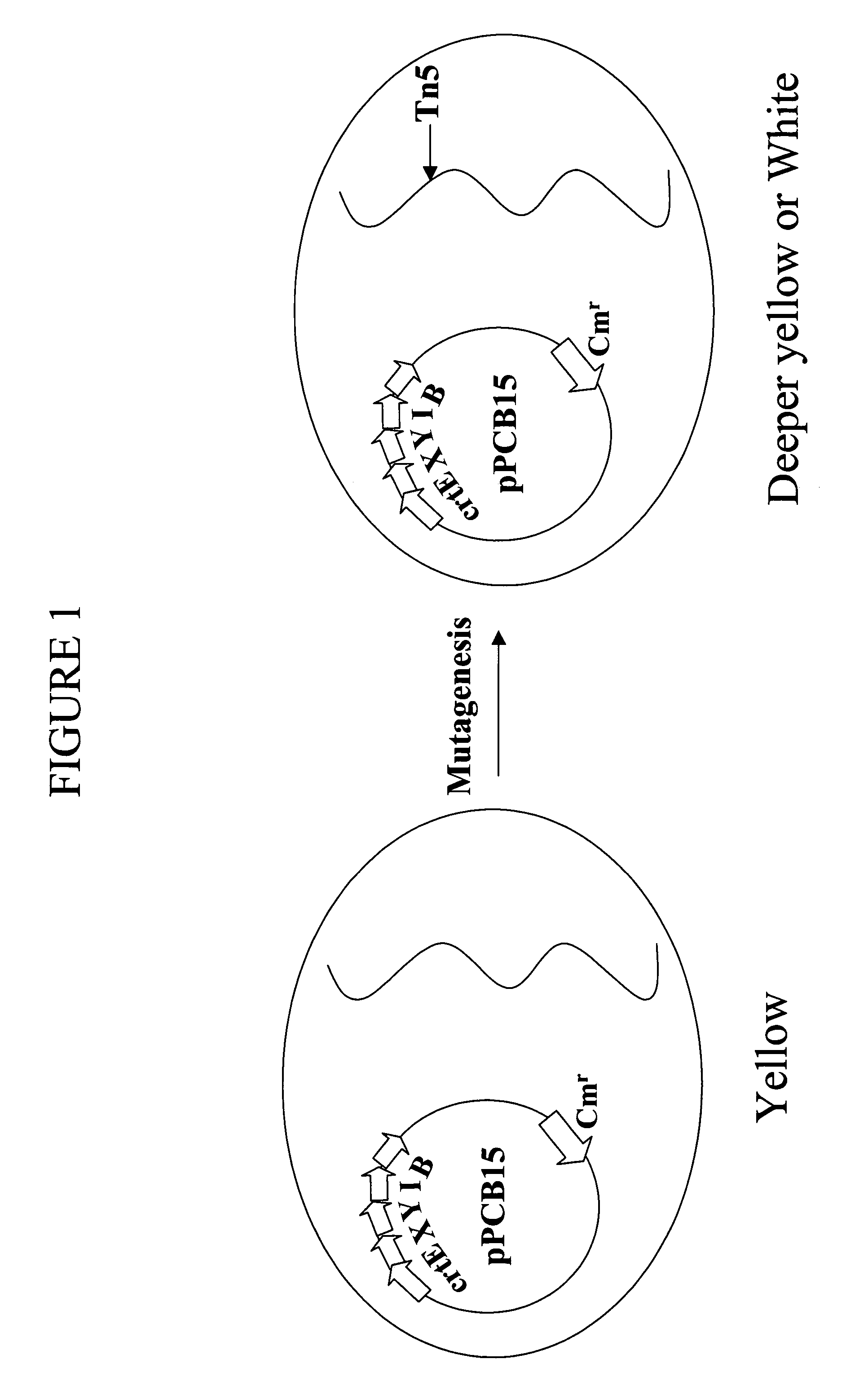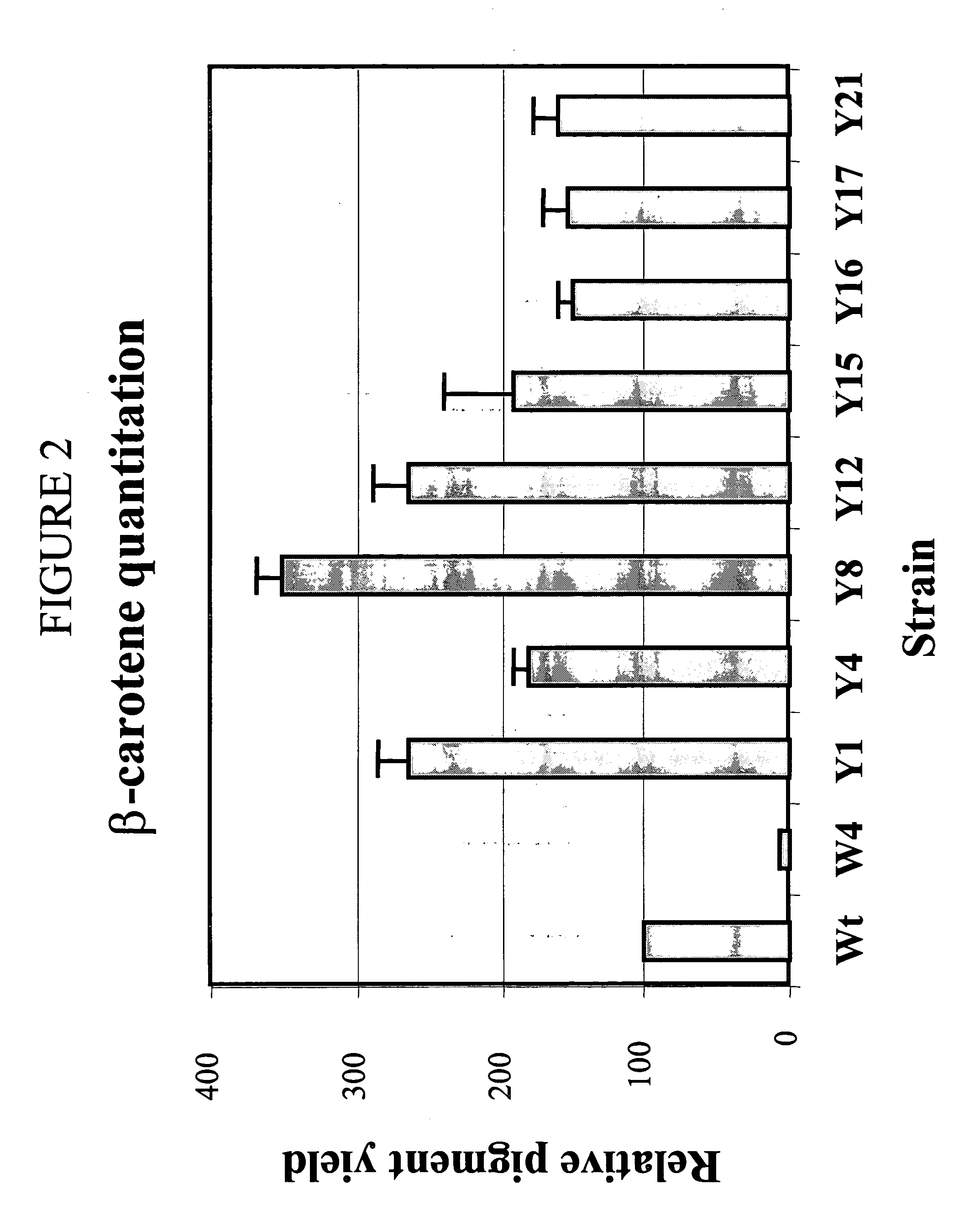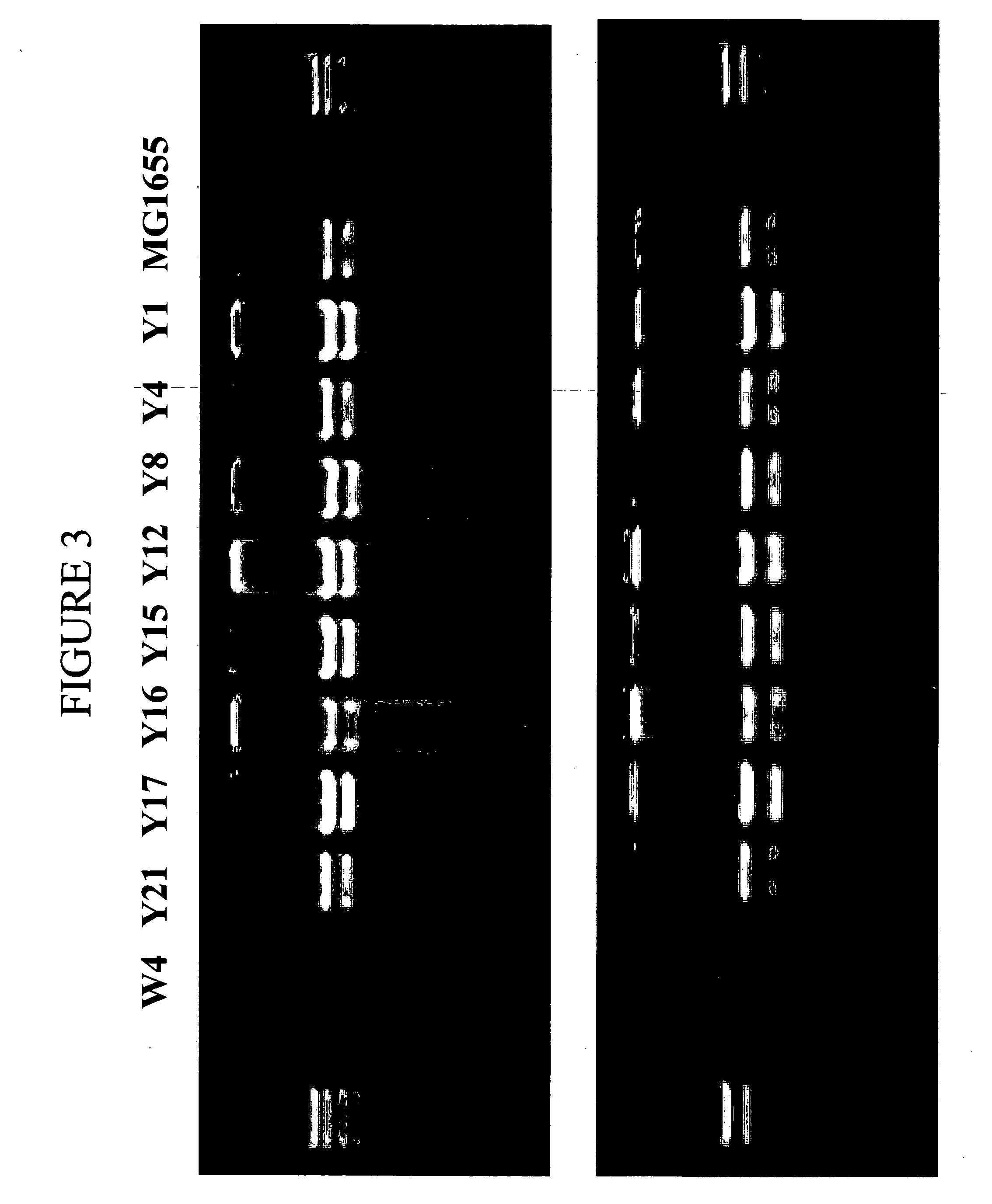Mutations affecting plasmid copy number
a technology of plasmid copy number and mutation, applied in the field of microorganisms, can solve the problems of affecting cell viability and growth, difficult to maintain vectors in host cells, and no single strategy for achieving maximum expression of every cloned gen
- Summary
- Abstract
- Description
- Claims
- Application Information
AI Technical Summary
Problems solved by technology
Method used
Image
Examples
example 1
Cloning of β-Carotene Production Genes from Pantoea stewartii
[0147]Primers were designed using the sequence from Erwinia uredovora to amplify a fragment by PCR containing the crt genes. These sequences included 5′-3′:
[0148]
ATGACGGTCTGCGCAAAAAAACACGSEQ ID 13GAGAAATTATGTTGTGGATTTGGAATGCSEQ ID 14
Chromosomal DNA was purified from Pantoea stewartii (ATCC NO. 8199) and Pfu Turbo polymerase (Stratagene, La Jolla, Calif.) was used in a PCR amplification reaction under the following conditions: 94° C., 5 min; 94° C. (1 min)-60° C. (1 min)-72° C. (10 min) for 25 cycles, and 72° C. for 10 min. A single product of approximately 6.5 kb was observed following gel electrophoresis. Taq polymerase (Perkin Elmer, Foster City, Calif.) was used in a ten minute 72° C. reaction to add additional 3′ adenosine nucleotides to the fragment for TOPO cloning into pCR4-TOPO (Invitrogen, Carlsbad, Calif.) to create the plasmid pPCB13. Following transformation to E. coli DH5α (Life Technologies, Rockville, Md.) ...
example 2
Identification and Characterization of Pantoea stewartii Genes
[0149]Genes encoding crtE, X, Y, I, B, and Z, cloned from Pantoea stewartii, were identified by conducting BLAST (Basic Local Alignment Search Tool; Altschul et al., J. Mol. Biol., 215:403-410 (1993)) searches for similarity to sequences contained in the BLAST “nr” database (comprising all non-redundant GenBank® CDS translations, sequences derived from the 3-dimensional structure Brookhaven Protein Data Bank, the SWISS-PROT protein sequence database, EMBL, and DDBJ databases). The sequences obtained were analyzed for similarity to all publicly available DNA sequences contained in the “nr” database using the BLASTN algorithm provided by the National Center for Biotechnology Information (NCBI). The DNA sequences were translated in all reading frames and compared for similarity to all publicly available protein sequences contained in the “nr” database using the BLASTX algorithm (Gish, W. and States, D., Nature Genetics, 3:26...
example 3
Isolation of Chromosomal Mutations that Affect Carotenoid Production
[0152]Wild type E. coli is non-carotenogenic and synthesizes only the farnesyl pyrophosphate precursor for carotenoids. When the crtEXYIB gene cluster from Pantoea stewartii was introduced into E.coli, β-carotene was synthesized and the cells became yellow. E. coli chromosomal mutations which increase carotenoid production should result in deeper yellow colonies. E. coli chromosomal mutations which decrease carotenoid production should result in lighter yellow or white colonies (FIG. 1).
[0153]The β-carotene reporter plasmid, pPCB15 (camR), encodes the carotenoid biosynthesis gene cluster (crtEXYIB) from Pantoea Stewartii (ATCC NO. 8199). The pPCB15 plasmid (SEQ ID NO. 28) was constructed from ligation of SmaI digested pSU18 (Bartolome et al., Gene, 102:75-78 (1991)) vector with a blunt-ended PmeI / NotI fragment carrying crtEXYIB from pPCB13 (Example 1). E. coli MG1655transformed with pPCB15 was used for transposon mu...
PUM
| Property | Measurement | Unit |
|---|---|---|
| volume | aaaaa | aaaaa |
| volume | aaaaa | aaaaa |
| volume | aaaaa | aaaaa |
Abstract
Description
Claims
Application Information
 Login to View More
Login to View More - R&D
- Intellectual Property
- Life Sciences
- Materials
- Tech Scout
- Unparalleled Data Quality
- Higher Quality Content
- 60% Fewer Hallucinations
Browse by: Latest US Patents, China's latest patents, Technical Efficacy Thesaurus, Application Domain, Technology Topic, Popular Technical Reports.
© 2025 PatSnap. All rights reserved.Legal|Privacy policy|Modern Slavery Act Transparency Statement|Sitemap|About US| Contact US: help@patsnap.com



